For those looking to set up an RV park, campground, or private campground with RVs for rent, an important question to answer is: How many sites can realistically be provided per septic tank? Knowing the right number of RV sites per septic tank will help ensure your campsite maintains a safe and habitable environment for the duration of your guests’ stay. This blog post will explore the fundamentals of RV site planning and discuss how many RVs are suitable for each septic tank.
Table of Contents
What are RV Septic Tanks?
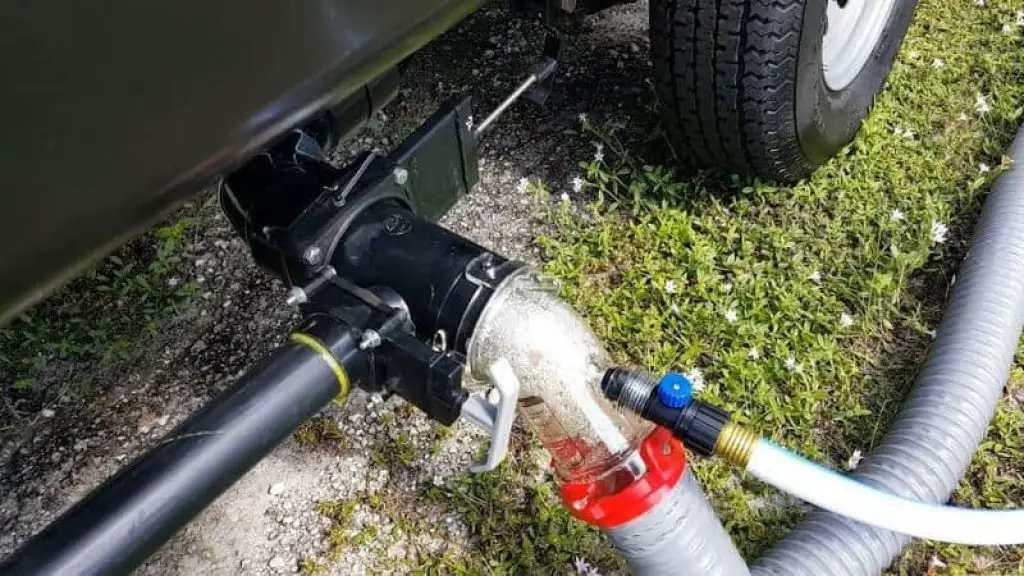
RV septic tanks are a crucial component of many recreational vehicles and offer a convenient way to dispose of sewage waste. An RV septic tank is a large holding tank that captures and stores wastewater from the RV’s toilet, sinks, showers, and other drains. The wastewater is held in the tank until it can be disposed of properly at an approved dumping station.
To keep your RV in good condition, it’s important to maintain your septic system regularly. This means emptying the blackwater (toilet) tank and flushing out the gray water (shower/sink) tanks as needed. Additionally, you should also inspect all hoses regularly for any signs of cracks or leaks. If you notice any damage, make sure to replace them right away. Regular maintenance and proper use will help ensure that your RV septic tank remains in good condition for years to come.
Finally, it’s important to remember that RV septic tanks are not designed to handle all types of waste. Things like cooking grease, motor oil, and chemicals should never be flushed down the drain or poured into your RV septic tank. Doing so can cause a great deal of damage and will require costly repairs.
Tips for Proper Septic Tank Usage
Regular use and maintenance of your RV se dumped entoptic tank is essential if you want it to function properly and last a long time. Here are some tips to help keep your septic tank in good condition: the 1 tank.
- Empty out the blackwater tank regularly – Depending on how much water your family has. Doing uses, you should empty out the blackwater tank at least once every 2 to 3 weeks. The longer you wait to empty it, the more waste will accumulate and cause damage to your septic tank.
- Use RV-friendly products – Harsh chemicals used in household cleaning products can be damaging for an RV’s septic system and should not be used. Instead, opt for biodegradable or RV-specific cleaning products that are designed for use in RVs.
- Avoid clogs – A clogged blackwater tank is a common problem with RV septic tanks, so make sure you avoid any potential blockages by being careful about what you put down the drain or toilet. Items such as paper towels, diapers, sanitary napkins, tampons, and even grease can all lead to clogs.
- Have it inspected regularly – It is important to have your RV septic system inspected by a professional at least once per year to ensure that everything is functioning properly and there are no potential problems that could lead to damage over time.
- Pump out the tank when necessary – If you notice any signs of an issue with your septic tank, such as water or waste that is not draining properly, then it’s time to call in a professional who can pump out the tank for you and inspect it for any problems. Doing this periodically will help you avoid costly repairs down the line.
- Avoid parking on top of the septic field – The lines connected to your septic tank are buried beneath the ground, so it’s important to avoid parking or driving on top of them. This can cause breaks in the lines which can lead to costly repairs.
- Use enzymes – To help break down solid waste and keep your blackwater tank functioning properly, you should use a special septic-safe enzyme product regularly. These products work by breaking down solids that are in the tank and preventing clogs in the future. Additionally, they can also help reduce odors coming from the tank as well [2].
How to Construct a Small RV Septic System
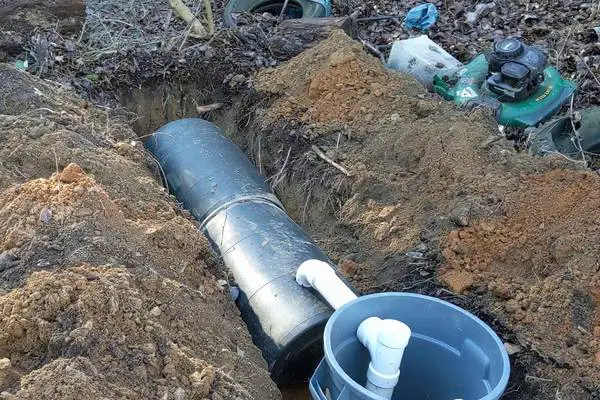
Step 1: Choose the Correct Tank
The first step in building a small RV septic system is to choose the correct tank. The size of the tank will depend on both the number of people using it and how long they’ll be camping. Generally, tanks are available in sizes ranging from 35 to 100 gallons. It’s recommended that you purchase one at least twice as large as needed so your waste doesn’t overflow.
Step 2: Place the Tank
Once you’ve purchased a tank, you’ll need to find an appropriate location for it. Consider nearby trees or other vegetation, underground utilities, and water sources when looking for potential spots. Also, make sure that your chosen spot is level so that liquids can flow properly into the drain field. Try to put the tank close enough to the RV for easy access.
Step 3: Connect the Tank to the Drain Field
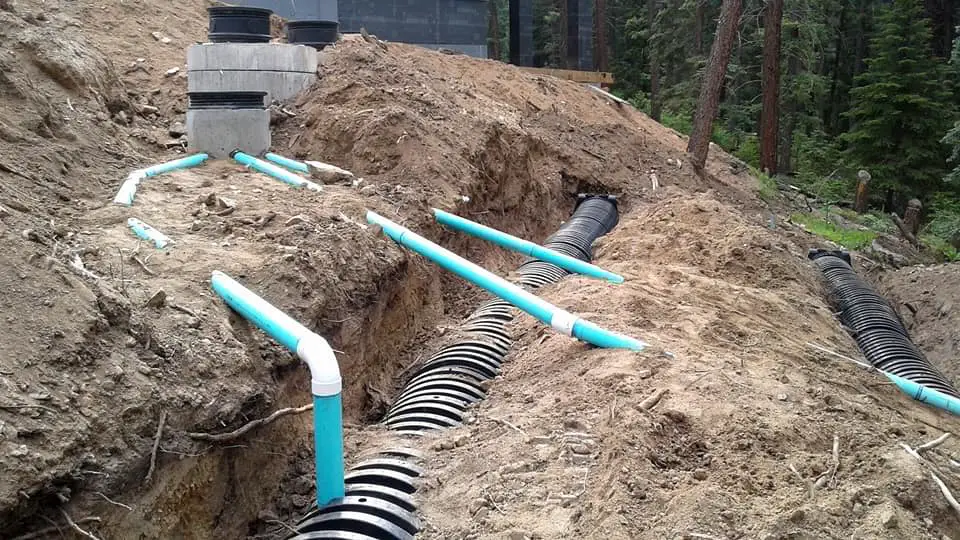
Once you have your tank in place, you’ll need to connect it to a drain field. The easiest way is with a pipe that feeds from the septic tank into a distribution box and then into several trenches filled with gravel. Be sure to slope all pipes slightly downward so liquids can flow properly through them. Make sure that all connections are secure and sealed properly with PVC cement or sealant.
Step 4: Monitor Your System
Finally, once your system is in place, you should monitor it regularly for signs of trouble such as slow draining or foul odors.
By following these steps, you can easily construct a small RV septic system that will serve your needs no matter where you travel. With the right tank, proper installation, and regular monitoring, you’ll be able to enjoy camping without worrying about where to dispose of waste. [3]!
How Many RV Sites per Septic Tank?
On average, a 1,000-gallon septic tank can accommodate up to six recreational vehicle (RV) sites. Depending on the size of your septic tank and the number of people using it, you may be able to fit more or fewer RV sites inside your septic tank. For example, a septic system with two 500-gallon tanks could fit up to twelve RV sites, while one with a single 2,500-gallon tank could accommodate 24 RV sites. It’s also important to note that some areas have regulations in place that limit the number of RVs allowed per septic system.
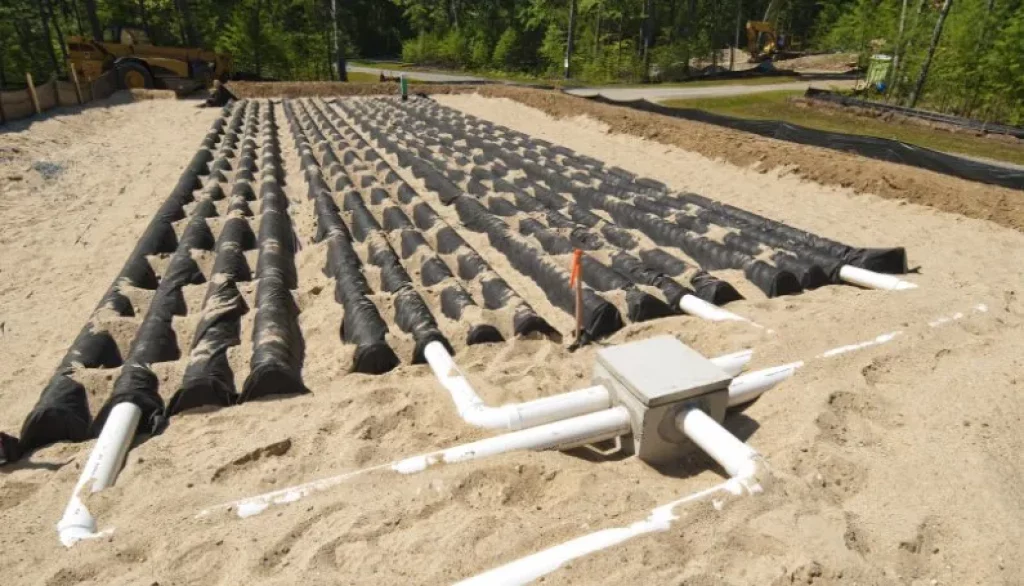
These rules vary from state to state and county to county, so it’s important to check with your local health department to determine the legal requirements for your area. Additionally, if you plan on installing a septic tank, it’s important to factor in the size and number of RVs that will be using it when planning the system. A properly sized and maintained septic system can provide years of reliable service for RV enthusiasts.
Furthermore, there are other factors to consider when determining how many RV sites per septic tank can be accommodated. These include water usage levels from each site, the size of the tanks themselves, and even soil conditions in the surrounding area. In general, larger tanks can hold more wastewater than smaller ones because they have a greater capacity for storing solids before needing to be emptied [4].
How to maintain an RV septic tank?
Maintaining an RV septic tank is essential for avoiding costly repairs and ensuring the tank doesn’t become overwhelmed. Here are a few tips to help you maintain your RV septic system:
- Avoid putting in materials that will clog up the system, such as wipes or feminine hygiene products.
- Spread out use of the toilet by not using it more than necessary and flushing only when necessary. For instance, if one person has used the bathroom multiple times in a day, wait until the following day to flush it all out instead of doing so after every single visit.
- Have your RV septic tank pumped at least once a year by a professional service to avoid build-up.
- Keep an eye on the level of the tank and never let it get too full.
- Use biodegradable cleaning products whenever possible, to reduce stress on the system.
- Make sure that all of your RV pipes are properly sealed to avoid leaks or spills getting into the septic system.
- Never pour any hazardous materials down your RV toilet – chemicals and bleach can cause damage to both your RV plumbing and septic systems!
By following these simple steps, you will be able to keep your RV septic tank in great shape for years to come!
FAQ
How big is a septic tank on an RV?
The size of an RV septic tank varies depending on the size and type of RV. Generally, smaller RVs may have a single holding tank that ranges from 6 to 10 gallons in capacity while larger RVs may have two separate tanks with capacities up to 40 or more gallons each. Some RV’s also have specialized black water tanks that are used for the toilet waste or gray water tanks for sinks and showers. For most RVs, it is best to consult your owner’s manual or contact the manufacturer for exact specifications regarding tank sizes.
How often should I empty my RV septic tank?
Empty your RV’s septic tank when it reaches ¾ full, which is generally every 3-5 days. Depending on the size of your RV and how many occupants you have, you may need to empty your septic tank more or less frequently. Additionally, be sure to check local regulations in areas where you plan on camping as some places may have specific requirements for tank emptying.
What should I do if my RV’s septic tank overflows?
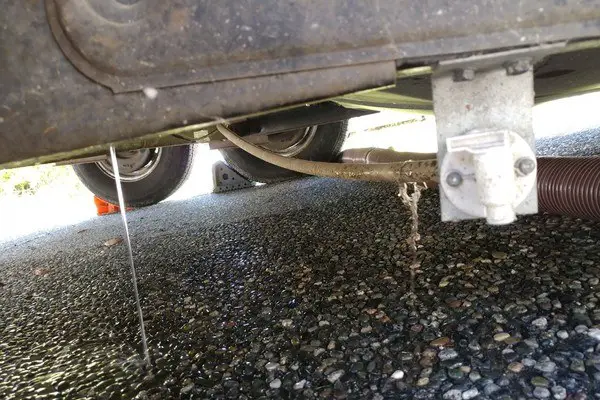
If your RV’s septic tank overflows, take immediate action by disconnecting from the sewer connection and finding a suitable place to dump the excess waste. Once that is taken care of, clean up any spilled wastewater with water and appropriate cleaning supplies to limit contamination and damage. Have your septic system checked regularly by a professional service provider to ensure it is functioning properly and to identify any potential issues before they become a serious problem. Additionally, be sure to practice good habits such as not overfilling the tank and using holding tank treatments to reduce odors and prevent clogs.
Are there any special considerations in maintaining an RV septic system?
Yes, there are certain considerations when it comes to maintaining an RV septic system. For instance, you should never pour chemicals or other hazardous materials into your septic tank as this can cause damage to the tanks and the environment. Additionally, avoid parking your RV on top of a septic tank opening or burying the tanks underground as this can impede proper drainage and lead to costly repairs down the line. Finally, if you plan on leaving your RV unattended for an extended period of time be sure to pump out the tanks before you go. This will help reduce potential damage due to overflowing or freezing temperatures.
What should I do if my RV’s holding tank gets a clog?
If your RV’s holding tank gets a clog, never attempt to use a plunger or harsh chemical drain cleaners as these can damage the tank and the environment. Instead, begin by emptying out any accumulated water in the tank before using an RV safe holding tank treatment such as enzyme products to break down organics and help dissolve the blockage. If this doesn’t work, contact a professional service provider for assistance in safely clearing the clog.
What are some tips for keeping my RV septic system running smoothly?
There are several things you can do to keep your RV septic system running smoothly. For starters, regularly check all of your tanks and hoses for signs of wear or damage which could lead to leaks or other issues down the road. Additionally, practice good tank maintenance habits such as not overfilling your tanks and using holding tank treatments to reduce odors and prevent clogs. Finally, if you plan on leaving your RV unattended for an extended period of time, be sure to pump out the tanks before you go in order to minimize the risk of overflowing or freezing temperatures.
What is the capacity of a septic?
The capacity of a septic tank is typically determined by the size and type of RV you have. Most smaller RVs have a single holding tank ranging in capacity from 6 to 10 gallons, while larger RVs may have two separate tanks with capacities up to 40 or more gallons each. Additionally, some RV’s also have specialized black water tanks that are used for toilet waste as well as gray water tanks for sinks and showers. For exact specifications regarding your RV’s tank sizes, it is best to consult your owner’s manual or contact the manufacturer.
What do I need to do before dumping my RV septic tank?
Before dumping your RV septic tank, be sure to check local regulations in areas where you plan on camping as some places may have specific requirements for tank emptying. You should also never dump your RV septic tank directly onto the ground, as this can lead to contamination of local water sources and ecosystems. Additionally, be sure to use a hose with the correct fittings in order to avoid any leaks or spills. Finally, always practice good tank maintenance habits such as not overfilling your tanks and using holding tank treatments to reduce odors and prevent clogs.
What are the rules for RV parks in Texas?
RV parks in Texas must abide by several rules and regulations set out by the Texas Department of Housing and Community Affairs (TDHCA). These include requirements for minimum lot size, building setbacks, parking spaces, water supply systems, sewage disposal systems, fire protection facilities, electrical codes and more. Additionally, RV parks must obtain a license from TDHCA before they can operate legally in the state. For more information about RV park regulations in Texas you can contact TDHCA directly or visit their website.
Useful Video: How Many RV Spots Can You Fit Per Acre?
Conclusion Paragraph
A number of RV sites per septic tank capacity calculations have been discussed in this paper. The most accurate way to calculate the number of RV sites per septic tank is to use a combination of the approaches discussed, including estimating the size of the tanks and basing them on soil type as well as accounting for evaporation. It is also important to ensure that all other variables are taken into consideration, such as water availability, maintenance requirements and environmental concerns.
References:
- https://www.campanda.com/magazine/rv-tanks-guide/
- https://www.envirodesignproducts.com/blogs/news/10-tips-for-maintaining-your-septic-tank
- https://www.hunker.com/12002276/how-to-construct-a-small-rv-septic-system
- https://www.rvcampgear.com/how-many-rv-sites-per-septic-tank/

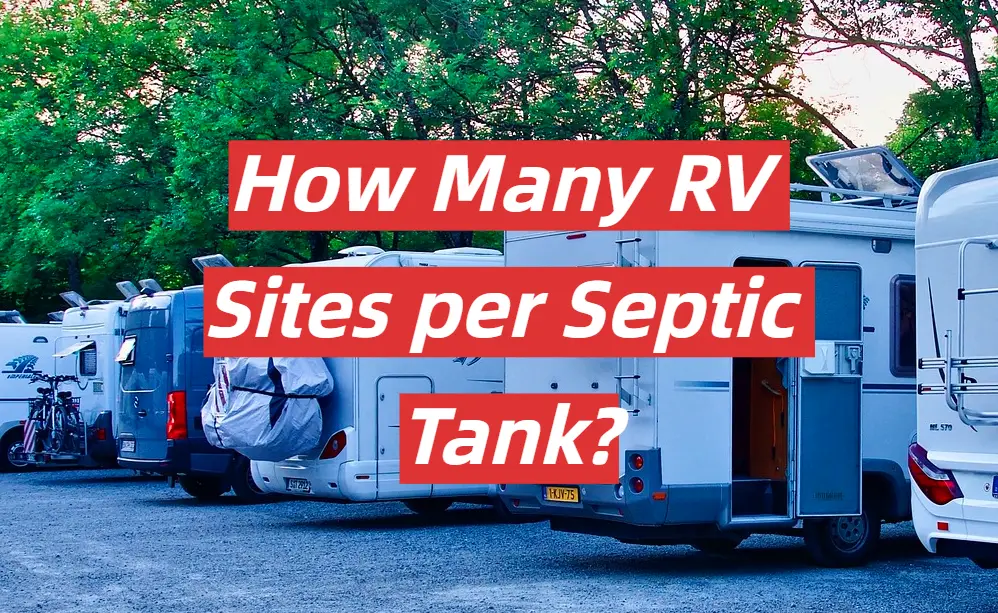




Leave a Reply